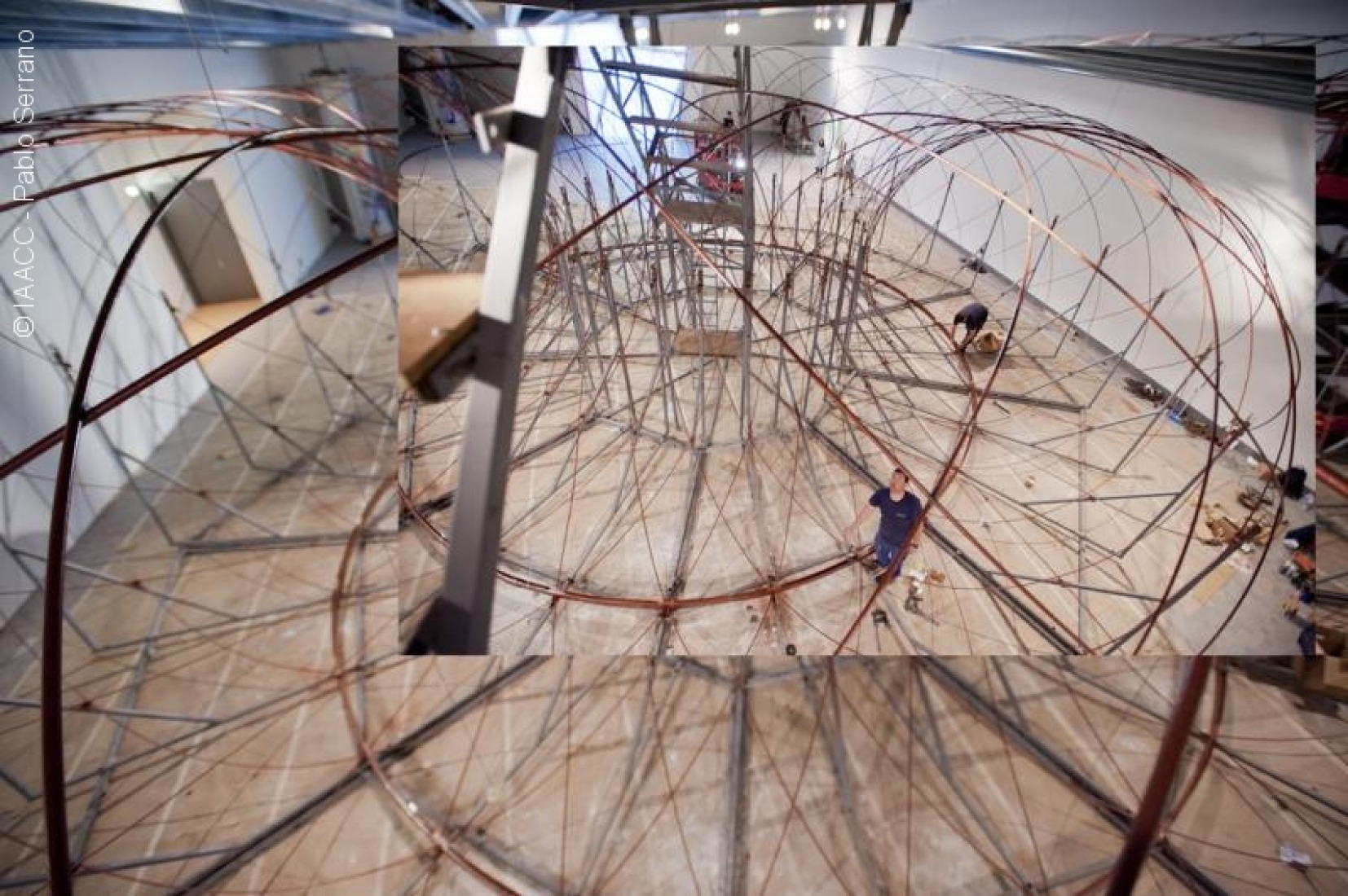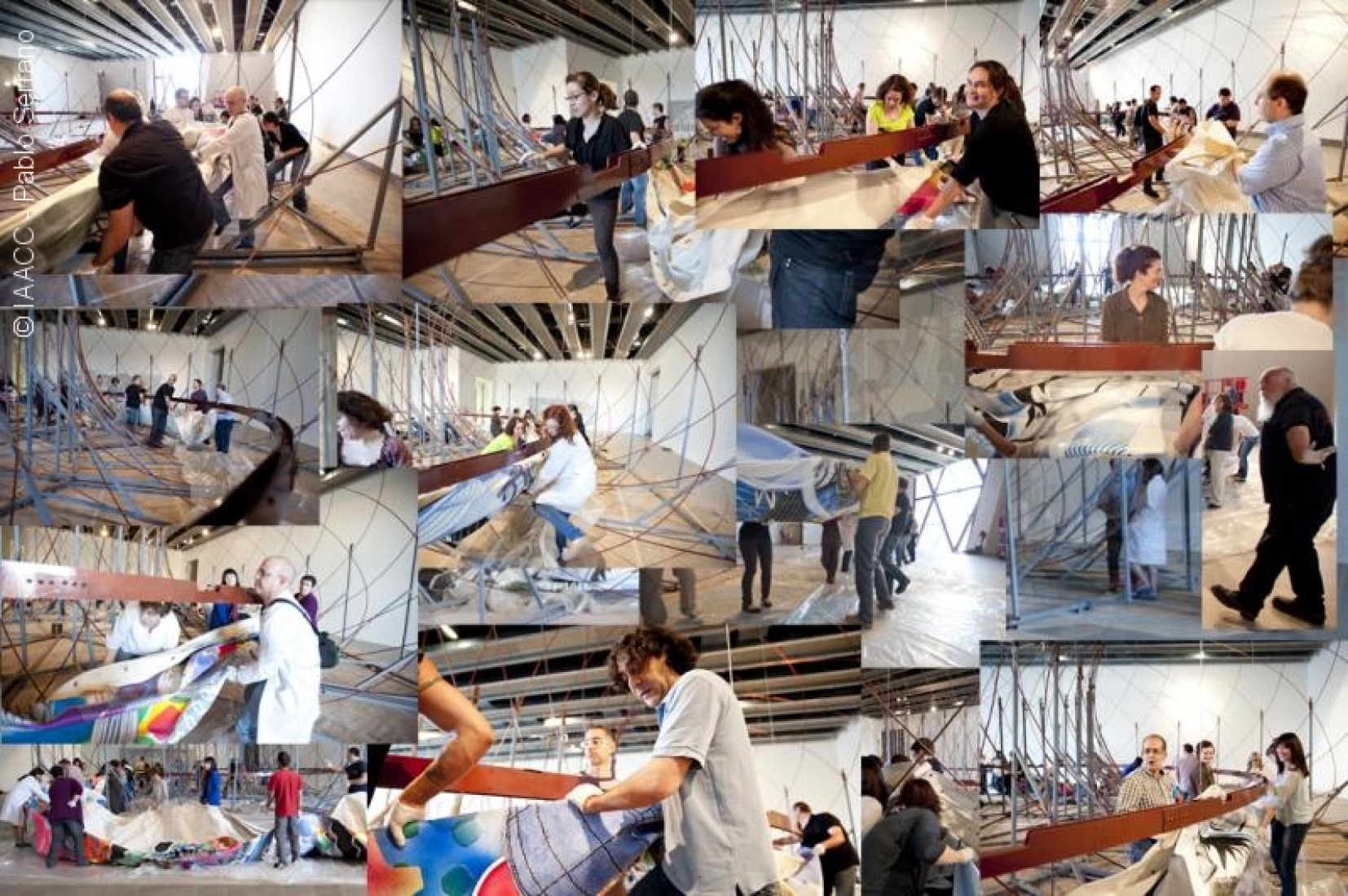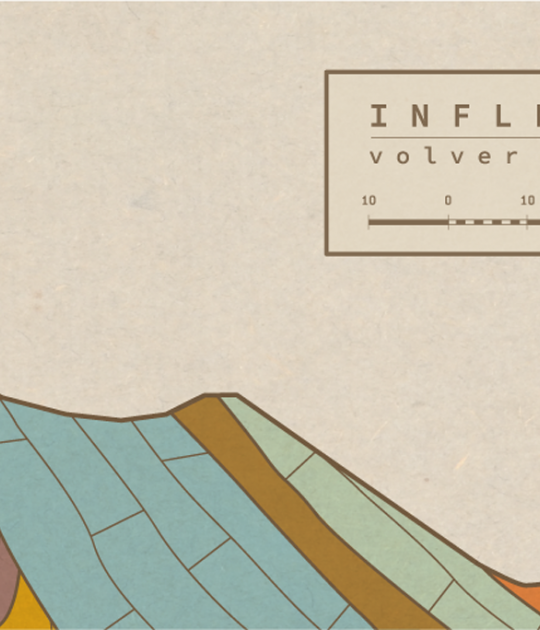"The Michael Kohlhaas Curtain" merges one of Frank Stella's monumental works, a 30-meter-long mural and a ton of weight made in 2008, with a steel sculpture-structure by Santiago Calatrava, designed with an atypical form in architecture and in geometry: a toroid, a figure in perfect harmony and balance that is already present in the work of the Spanish architect since its inception and that can be seen in the IAACC Pablo Serrano from May 22 to December 15.
The curator of the exhibition, Cristina Carrillo de Albornoz proposed that the work be exhibited in Zaragoza, at the IAACC Pablo Serrano that was about to reopen its doors. That's when the IAACC Pablo Serrano enters into collaboration with the Neue Nationalgalerie in Berlin -New National Gallery, designed by Mies van der Rohe in 1968- where the piece was exhibited last year, which has allowed us to offer two different versions of the installation .
In Zaragoza, due to the dimensions of the room, it is slightly open on one side so that the visitor can penetrate it by being in an architectural refuge. The installation becomes a complex and magical space experience for spectators.
Stella and Calatrava
This is also a story of the reciprocal influence between painting, architecture and between two artists who admire each other. Both show great interest in movement and austerity in the work of art, marvelously fuse baroque and minimalism and there are many points that they share beyond their love for Rome, for Picasso or for bridges. In fact, the work of both transcends the boundaries between painting, sculpture and architecture.
Stella is a painter-sculptor who has been attracted to architecture and space since the 1960s. Stella uses paint as a means to pierce the space around her. In parallel, the works of the architect, painter and sculptor Santiago Calatrava have sculptural forms close to human anatomy and forms of nature, as is the case in suspended bridges and buildings that twist over themselves like the famous “Turning Torso” of Malmö (Sweden ).
Stella and Calatrava met in 1990 when the American artist went to visit the Saint-Exupéry train station that Calatrava was building in Lyon. The collaboration arose when Calatrava, in early 2009, visited Stella's studio near New York. There he saw The Michael Kohlhaas Curtain, a gigantic, vibrantly colored mural inspired by the novel Michael Kohlhaas by German writer Heinrich von Kleist. Stella, a great lover of German culture since her time as a student, like Santiago Calatrava, chose this story of rebellion because of its surprising modernity, dynamism and the narrative possibilities it contains to transfer it to painting. Seeing it, Calatrava thought of one of the keys to Frank Stella's general work; that is, in the tension of the limits and the problem of the frame of the pictorial works, a question on which paradoxically Calatrava made his doctoral thesis in 1981 and whose central point was how linear forms can adopt three-dimensionality.
After this meeting, both concluded that Calatrava would solve this issue in collaboration, creating a delicate architectural structure in the form of a toroid, created with multiple networks, of great visual simplicity and enormous technical complexity. In it the mural of Stella would be inserted, being subject and suspended inside. Then in an architectural gesture the whole would be elevated from the ground.
The curator of the Cristina Carrillo de Albornoz project comments “The final impact of the joint work is undeniable. Stella's colossal and dense work, painted on both sides with vibrant colors and dynamic patterns, takes on the toroid not only a new sculptural and architectural dimension but a surprising lightness (...) at the same time, is wrapped in a frame without a beginning or end. And inside the toroid, between the structure and the space, you can see both sides of the canvas. But the miraculous thing is that the elegant and powerful structure of Calatrava rises almost invisible, reminding us of the desire as Yoshio Taniguchi said that the purpose of contemporary architecture is not just to involve but to disappear”. In conclusion, according to Cristina Carrillo, “Art, literature and architecture combine to form an installation with exuberant energy that transcends traditional forms of classification. Completely unexpected."
Venue.- IAACC Pablo Serrano, Paseo de María Agustín, 19. 50004 Zaragoza.
Dates.- May 22 to December 15, 2012.




























